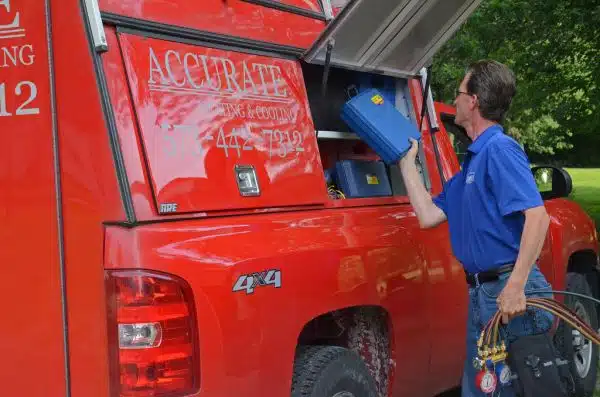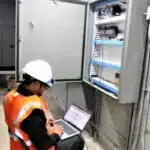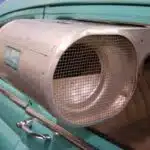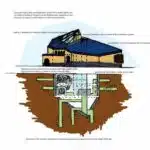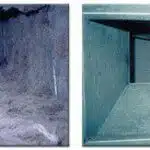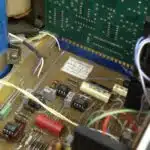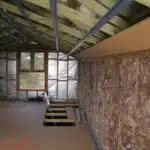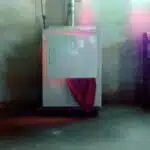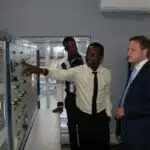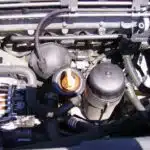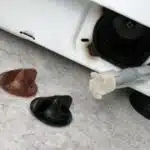The home air conditioning system plays a vital role in maintaining comfortable and healthy indoor living conditions. As an HVAC engineer, it is imperative to understand the complex mechanisms that make up this system and how they work together to provide efficient cooling and air circulation. In this article, we will explore the different components of a typical home air conditioning system and their functions.
Firstly, the refrigeration cycle is at the heart of any air conditioning system. This cycle involves the transfer of heat from inside a building to the outdoors through the use of a refrigerant. The refrigerant flows through four main components: the compressor, condenser, expansion valve, and evaporator. As it moves through these components, it undergoes changes in pressure and temperature that allow it to absorb heat from inside a building and release it outside, resulting in cool air being circulated back indoors. Understanding how each component contributes to this process is essential for ensuring optimal performance of a home air conditioning system.
The Refrigeration Cycle
Imagine a world without the ability to control indoor air temperature. We would be at the mercy of the elements, enduring harsh summers and bitter winters. Thankfully, this is not the case, as we have access to an incredible invention called the air conditioning system. It’s a marvel of engineering that makes our lives better by keeping us comfortable in our homes and workplaces.
At the heart of every air conditioning system is what’s known as the refrigeration cycle. This cycle involves four main components: a compressor, a condenser, an expansion valve, and an evaporator. Each component plays a vital role in manipulating the physical properties of refrigerant gases to transfer heat from inside a building to outside.
The common applications of air conditioning systems range from residential homes to commercial buildings. However, it’s also essential to consider their environmental impact since they consume electricity and use refrigerants that are harmful to the ozone layer when released into the atmosphere. To mitigate this issue, advancements in technology have led to more efficient models with lower energy consumption and eco-friendly refrigerants that minimize damage to our planet’s environment.
The Compressor: A Key Component
As previously explained, the refrigeration cycle is the foundation of how your home air conditioning system works. However, a key component that makes this process possible is the compressor. It works by compressing the low-pressure, low-temperature refrigerant gas into high-pressure, high-temperature gas.
The compressor is undoubtedly one of the most important components in an air conditioning system. As such, it is vital to ensure that it receives proper maintenance to keep it running optimally. Neglecting routine maintenance can lead to a variety of issues such as reduced efficiency and even total system failure. Some essential compressor maintenance practices include checking and cleaning filters regularly, inspecting electrical connections for signs of wear or damage and lubricating moving parts as required.
If your compressor does fail due to age or lack of maintenance, it may be necessary to replace it entirely. In such cases, homeowners have several replacement options to consider, including purchasing a new compressor or opting for a complete system replacement. While replacing just the compressor may seem like a more cost-effective option, it’s important to note that older systems may not be compatible with newer compressors.
Bullet point list:
- Regularly check and clean filters
- Inspect electrical connections for signs of wear/damage
- Lubricate moving parts as required
To ensure that your air conditioning system runs smoothly all year round, regular maintenance on its various components is crucial. The next section will discuss another critical part of this process: heat release through the condenser.
The Condenser: Heat Release
The condenser is the heart of your air conditioning system. Like a beating heart, it pumps refrigerant throughout the system, releasing heat into the environment. Heat transfer methods play an integral role in this process, as they ensure that your home stays cool and comfortable during those hot summer months.
There are two types of heat transfer methods used in air conditioning systems: conduction and convection. The former involves the transfer of heat between two objects that are in direct contact with each other, while the latter involves the movement of fluids or gases to transfer heat energy. In the case of your air conditioner’s condenser, both methods are employed to release heat from the refrigerant into the surrounding environment.
However, it’s important to note that this process can have an environmental impact. The refrigerant used in your air conditioning system can contribute to greenhouse gas emissions if it leaks out into the atmosphere. That’s why proper maintenance and repair is crucial for ensuring that your air conditioning system operates efficiently and without any harmful effects on the environment.
As we move on to discuss the expansion valve and its role in pressure regulation, it’s important to keep in mind how all these components work together to create a functioning air conditioning system. By understanding each step of this process, you’ll be better equipped to take care of your home’s HVAC needs and ensure that you’re serving others by providing a comfortable living space for yourself and those around you.
The Expansion Valve: Pressure Regulation
The expansion valve serves a crucial role in regulating the pressure of the refrigerant as it moves through the air conditioning system. Its main function is to decrease the pressure of the refrigerant, which causes it to expand and cool down rapidly. This cooled-down refrigerant then flows into the evaporator where it absorbs heat from the surrounding air, ultimately resulting in cooler air circulating throughout the home.
Proper maintenance of the expansion valve is essential for ensuring its continued functionality within an air conditioning system. Over time, debris and contaminants can accumulate within the valve, causing it to malfunction or even fail completely. Regular cleaning and inspections by a professional HVAC technician should be performed to ensure that any issues with the expansion valve are quickly identified and addressed.
Different types of refrigerants are suitable for use in an expansion valve system. The most common type used today is R-410A, which is more environmentally friendly than previous generations of refrigerants. However, other types such as R-22 may still be used in older systems. It’s important to note that mixing different types of refrigerants can lead to serious problems, so homeowners should always consult with a licensed professional before making any changes to their air conditioning system.
Moving further into our discussion on how your home air conditioning system works, we will now delve into another crucial component: the evaporator. This section will explore how this component functions within your AC unit and its role in cooling down the air circulated throughout your home.
The Evaporator: Cooling The Air
Moving on to the next stage of the air conditioning process, we come to the evaporator. This component is responsible for cooling the warm air that passes through it, before it is released into your home. The evaporator works by absorbing heat from the air and transferring it to a refrigerant fluid, which then carries the heat away from your home. Proper insulation is key for maximizing energy efficiency in this process.
One important aspect to keep in mind when it comes to the evaporator is regular cleaning. Over time, debris such as dust and dirt can accumulate on the unit’s coils, reducing its ability to cool effectively and leading to higher energy bills. Not only that, but a dirty evaporator can also impact indoor air quality and potentially lead to respiratory issues. By scheduling routine maintenance with a professional HVAC technician, you can ensure that your system stays clean and efficient.
In sum, while often overlooked, the evaporator plays an essential role in keeping your home cool and comfortable during hot summer months. With proper insulation and regular cleaning, you can optimize its performance and keep your air conditioning system running smoothly for years to come. Moving forward, we will discuss another crucial aspect of maintaining healthy indoor air quality: air filters.
Air Filters: Keeping The Air Clean
The Evaporator section explained how the air conditioning unit cools the air by absorbing heat and moisture. However, in order for the system to function properly, it is important to ensure that the air being circulated is clean. Air filters play an essential role in maintaining indoor air quality and preventing pollutants from entering your home.
Air filter maintenance is crucial for optimal HVAC performance. Dirty or clogged filters can reduce airflow, causing the unit to work harder and consume more energy. Moreover, they can also allow dust, pollen, and other contaminants to circulate throughout your home, potentially triggering allergies or asthma symptoms. Therefore, it is recommended to replace or clean your air filters regularly depending on usage and manufacturer’s instructions.
The importance of clean air cannot be overstated. Indoor air pollution has been linked to various health issues such as headaches, dizziness, respiratory problems, and even cancer. By keeping your air filters clean and changing them regularly, you can significantly improve indoor air quality and protect yourself and your loved ones from harmful pollutants. So next time you turn on your A/C system, remember the crucial role of air filters not only in cooling but also in providing fresh and healthy indoor air.
As an HVAC engineer, I understand that regulating temperature is another important aspect of a home’s AC system. Thermostats control when the system turns on or off based on desired temperature settings. In the next section, we will discuss how thermostats work and their impact on overall HVAC efficiency and performance.
Thermostats: Regulating Temperature
As an HVAC engineer, I cannot emphasize enough the importance of regulating temperature in our homes. It is not just about comfort; it is also about energy efficiency and cost savings. One way to achieve this is through the use of thermostats.
Smart thermostat technology has become increasingly popular over the years. With its advanced features such as remote control and learning capabilities, it provides homeowners with greater control over their home’s temperature. This technology can also be integrated with other home automation systems, making it a convenient and efficient choice for those who value both comfort and convenience.
Programmable thermostats are another option that can benefit homeowners greatly. These thermostats allow you to set specific temperatures for different times of day or days of the week, allowing you to save energy when you are away from home or sleeping. You can program your thermostat to turn off your air conditioning system during the hours when no one is at home, thus reducing your energy consumption and saving you money on utility bills.
By utilizing smart thermostat technology or programmable thermostats, homeowners can ensure that their homes stay at a comfortable temperature while minimizing energy waste and expenses. In the next section, we will explore another essential component in home air conditioning systems: ductwork – transporting air.
Ductwork: Transporting Air
Ductwork is an essential component of your home air conditioning system. It is responsible for transporting conditioned air from the AC unit to various parts of your home. The ductwork network consists of a series of pipes that are interconnected, directing air to different rooms or areas inside a building.
Proper insulation is crucial in ductwork as it helps minimize heat transfer and ensures that the cooled air reaches its destination. Fiberglass insulation is commonly used in ductwork as it provides excellent thermal protection, but there are also other materials available depending on the specific needs of your home. Ductwork insulation helps maintain comfortable temperatures indoors while reducing energy costs.
Cleaning your ducts regularly can help improve indoor air quality by removing dust, dirt, and other contaminants that have accumulated over time. Dirty ducts can pose health risks and cause respiratory problems, especially for those with allergies or asthma. Professional duct cleaning services use specialized equipment to clean and sanitize ducts thoroughly, ensuring that your home’s indoor air is safe and healthy.
Next on our discussion about how your home air conditioning system works is ventilation: bringing in fresh air. Proper ventilation not only improves indoor air quality but also enhances energy efficiency by reducing humidity levels and preventing moisture buildup inside your home. Let’s take a closer look at how ventilation works and why it’s essential for maintaining a healthy living environment.
Ventilation: Bringing In Fresh Air
- Ventilation is the process of bringing in fresh air, replacing stale air, and removing pollutants from a given space.
- A basic ventilation system consists of an inlet and an outlet, allowing air to flow from one to the other.
- An air exchange system typically includes a fan and ductwork, which allow for the exchange of air from the inside to the outside of a building.
- Pollutant removal can be achieved through the use of air filters, which capture and remove airborne particles from the air.
- An air conditioning system can also be used to regulate the temperature and humidity of the air inside a space.
- The combination of these systems ensures that the air inside a space is fresh, with contaminants removed and temperature and humidity regulated.
Ventilation Basics
Proper ventilation is integral to maintaining a comfortable and healthy living environment. As an HVAC engineer, I understand the importance of air quality in ventilation, as it can have a significant impact on one’s health and well-being. The benefits of proper ventilation include reducing moisture levels, preventing the buildup of harmful pollutants, and promoting optimal indoor air quality.
One key aspect of ventilation basics is understanding how to bring in fresh air. This involves using mechanical systems like fans and ducts to circulate air throughout a building. It is crucial to ensure that this fresh air is filtered before entering the home, as unfiltered outdoor air can contain harmful particles such as pollen, bacteria, and mold spores.
Another important factor in proper ventilation is ensuring that stale air is removed from the home. This requires an effective exhaust system that can remove moisture and pollutants from areas like bathrooms and kitchens. By working together with a mechanical supply system that brings in fresh air, proper ventilation allows for optimal indoor air quality, which has been shown to enhance overall health and well-being.
In conclusion, proper ventilation is essential for maintaining a healthy and comfortable living environment. HVAC engineers must understand the importance of providing fresh, filtered air while removing stale air through effective exhaust systems. By prioritizing indoor air quality through proper ventilation techniques, we can create spaces that promote optimal health for all occupants.
Air Exchange System
Proper ventilation is an essential aspect of maintaining a healthy and comfortable living environment. In this article, we have discussed how bringing in fresh air and removing stale air are crucial components of proper ventilation. Now, let us delve deeper and discuss the benefits of using an air exchange system in ventilation.
Air exchange systems are designed to improve indoor air quality by replacing stale indoor air with fresh outdoor air. The process involves exchanging the indoor air with outdoor air through mechanical means like fans and ducts. Installing an air exchange system provides numerous benefits such as reducing moisture levels, preventing the buildup of harmful pollutants, and promoting optimal indoor air quality.
One significant advantage of using an air exchange system is that it helps eliminate pollutants from the indoor environment. It ensures that any harmful substances like radon gas and carbon monoxide do not accumulate inside the home. Additionally, an efficient air exchange system can improve energy efficiency by reducing heating and cooling costs while maintaining optimal indoor temperature levels. Thus, installing an effective ventilation system with an air exchange system can significantly enhance occupants’ health and wellbeing while improving overall energy efficiency in a building.
Pollutant Removal
Indoor air quality has a significant impact on people’s health and wellbeing. Poor ventilation can lead to the buildup of harmful pollutants, which can cause respiratory problems and other health implications. Therefore, it is essential to have an effective ventilation system that brings in fresh air and removes stale indoor air.
One way to improve indoor air quality is by using air purifiers. Air purifiers are designed to remove pollutants like dust, pollen, and smoke from the indoor environment. However, their effectiveness depends on various factors such as the type of filter used, room size, and pollutant levels.
While air purifiers can help eliminate some pollutants from the indoor environment, they cannot replace proper ventilation. An efficient ventilation system with an air exchange system is crucial in ensuring optimal indoor air quality. It not only helps remove pollutants but also reduces moisture levels that can lead to mold growth and other health hazards.
In conclusion, proper ventilation plays a vital role in maintaining healthy indoor environments. While air purifiers can be helpful in removing some pollutants, an efficient ventilation system with an air exchange system is necessary for optimal indoor air quality. HVAC professionals should prioritize educating their clients on the importance of proper ventilation and provide solutions tailored to individual needs for promoting healthy living environments.
Humidity Control: Maintaining Comfort
Ventilation plays a crucial role in maintaining indoor air quality, but it is not the only factor to consider. Humidity levels also greatly affect the effectiveness of your home air conditioning system. High humidity levels can make your home feel uncomfortable and cause your air conditioner to work harder than necessary.
To maintain comfort, it is important to use dehumidification techniques in conjunction with your air conditioning system. One method is to use a separate dehumidifier unit that works independently from your air conditioner. Another option is to install a whole-house dehumidifier that integrates with your current HVAC system. These systems remove excess moisture from the air and help control humidity levels.
The impact of high humidity on air conditioning cannot be overstated. When there is too much moisture in the air, it can hinder the effectiveness of your cooling system by making it harder for the evaporator coil to absorb heat. This results in higher energy bills and decreased comfort levels. By incorporating dehumidification techniques into your home’s HVAC system, you can improve its efficiency and save money on energy costs.
Types of refrigerants used in air conditioning systems depend on several factors such as efficiency, cost, and environmental impact. In the next section, we will explore some common types of refrigerants used in residential HVAC systems and their pros and cons. Understanding this information can help you make an informed decision when choosing a new or replacement AC unit for your home.
Types Of Refrigerants Used
R-134a is an HFC-based refrigerant that is commonly found in automotive air conditioning systems. R-22 is an HCFC-based refrigerant used in both residential and commercial air conditioning systems. R-410A is a popular HFC-based refrigerant used in many split-system air conditioning systems. R-407C is an HFC-based refrigerant that is a blend of R-32, R-125, and R-134a and is used in commercial and industrial applications.
R-134a
R-134a is a hydrofluorocarbon (HFC) refrigerant commonly used in home air conditioning systems. One of the benefits of using R-134a as a refrigerant is its exceptional thermodynamic properties, allowing it to efficiently absorb and release heat during the refrigeration cycle. This results in better cooling performance and higher energy efficiency compared to other types of refrigerants. Additionally, R-134a has a lower toxicity level and is non-flammable, making it a safer choice for residential use.
However, despite its advantages as a refrigerant, R-134a also has some environmental impacts that need to be considered. It is classified as a greenhouse gas and has a high global warming potential (GWP), which means that it contributes significantly to climate change when released into the atmosphere. To address this issue, efforts have been made to phase out the use of R-134a in various industries and replace it with more environmentally friendly alternatives.
To mitigate the environmental impact of R-134a, homeowners can take steps such as properly maintaining their air conditioning systems to prevent leaks and disposing of old refrigerants responsibly. They can also consider upgrading to newer units that use alternative refrigerants with lower GWPs or opting for more sustainable cooling options such as evaporative coolers or natural ventilation systems. As HVAC professionals, we play an important role in educating our clients about these options and helping them make informed decisions that are both environmentally responsible and cost-effective in the long run.
R-22
As HVAC professionals, it is important for us to be familiar with the different types of refrigerants used in air conditioning systems. One refrigerant that has been widely used in the past is R-22, also known as Freon. R-22 is a hydrochlorofluorocarbon (HCFC) refrigerant that has been found to have harmful effects on the environment and human health. In fact, it has been identified as one of the major contributors to ozone depletion and global warming.
In response to these concerns, efforts have been made to phase out the use of R-22 and replace it with more environmentally friendly alternatives such as R-410A. This phase-out has had an impact on homeowners who own older air conditioning systems that still use R-22. These homeowners may need to consider upgrading their units or retrofitting them with alternative refrigerants in order to comply with new regulations and avoid costly repairs or fines.
While this transition may pose some challenges for homeowners, it also presents an opportunity for them to choose more sustainable cooling options that are both efficient and eco-friendly. As HVAC professionals, we can play a key role in educating our clients about these alternatives and helping them make informed decisions that take into account both their budget and environmental impact. By working together, we can ensure that our homes stay cool while also protecting the planet for future generations.
Energy Efficiency: Saving On Costs
As an HVAC engineer, energy efficiency is a top priority in designing and maintaining home air conditioning systems. One way to save on costs is through the use of programmable thermostats. These devices allow homeowners to set different temperature levels for different times of the day. For example, during the workday when no one is home, the thermostat can be set to a higher temperature to conserve energy. In the evenings, when everyone is home, the temperature can be set lower for comfort.
Another way to increase energy efficiency is through insulation upgrades. Properly insulated homes retain cool air better, reducing the workload on air conditioning units. This results in less energy usage and lower costs. Insulation upgrades can include adding weatherstripping around doors and windows, sealing gaps in walls and roofs, and increasing attic insulation.
By implementing these energy-saving measures, homeowners can significantly reduce their air conditioning costs while still maintaining a comfortable living environment. In addition to saving money, they are also contributing to a more sustainable future by reducing their carbon footprint.
Transitioning into the subsequent section on maintenance tips for optimal performance: While programmable thermostats and insulation upgrades are effective ways to save on costs, regular maintenance of your air conditioning system is crucial for optimal performance. By following simple maintenance tips, you can extend the lifespan of your unit and ensure it continues operating at peak efficiency.
Maintenance Tips For Optimal Performance
To ensure that your home air conditioning system functions efficiently and with minimal disruptions, regular maintenance is necessary. DIY maintenance can be carried out by homeowners, but professional maintenance services are also available for those who prefer to leave it to the experts. Below are some tips on how to maintain your AC unit for optimal performance.
- Clean or replace air filters: Dirty filters can restrict airflow, causing the AC unit to work harder than necessary and potentially leading to breakdowns. It is recommended that filters be cleaned or replaced every 30-60 days, depending on usage.
- Check thermostat settings: Ensure the thermostat is set at the desired temperature and in the correct mode (cooling or heating). A malfunctioning thermostat can cause issues with temperature regulation.
- Examine ductwork: Inspect ducts for leaks, which can reduce efficiency and increase energy costs. Seal any leaks found with duct tape or contact a professional for repairs.
- Clean condenser coils: The outdoor unit’s condenser coils should be free of debris such as leaves and grass clippings. Dirty coils can reduce efficiency and cause damage to the compressor.
By following these maintenance tips, you can extend the lifespan of your AC unit and prevent costly repairs. However, if you encounter any issues beyond routine maintenance, professional services may be required for proper diagnosis and repair.
Maintaining your AC unit is crucial for optimal performance, but sometimes issues may arise despite regular upkeep. In the subsequent section about troubleshooting common issues, we will discuss some potential problems that you may encounter with your home air conditioning system and how they can be resolved.
Troubleshooting Common Issues
Like any other home appliance, air conditioning systems are prone to malfunctioning. Common AC problems include refrigerant leaks, clogged air filters, faulty thermostats, and malfunctioning compressors. These issues can cause the system to blow warm air, make unusual noises or stop working altogether. It is essential that homeowners understand how their AC units work and how to troubleshoot these common problems.
DIY troubleshooting techniques can help homeowners save money on costly repairs and maintenance services. For instance, if the AC unit is not cooling the room as it should be, check the thermostat settings first. Ensure that the temperature setting is correct and that the unit is receiving power. If all seems good with the thermostat, check if there’s an obstruction in the airflow by inspecting the air filter. Dirty filters restrict airflow and cause inefficiency in cooling.
In some cases, DIY troubleshooting techniques might not be enough to fix a problematic AC system. Upgrades and replacements might be necessary when common issues persist even after attempting several troubleshooting methods. In such cases, homeowners should consider consulting HVAC professionals for expert advice on what needs to be done next. They can evaluate whether a replacement or upgrade is necessary based on several factors such as age of the system or severity of damage to components like compressors or evaporator coils.
Upgrades And Replacements: When To Consider Them
Upgrade options for your home air conditioning system include adding a programmable thermostat, replacing outdated ductwork, and installing a zone control system. A programmable thermostat allows you to set different temperature levels throughout the day, which can save energy and lower your monthly bills. Replacing old ductwork can improve airflow and reduce the amount of dust and allergens in your home. A zone control system divides your home into separate areas that can be independently controlled for maximum comfort.
When considering replacement benefits for your air conditioning system, it is important to take into account the age and condition of your current unit. If your AC unit is over 10 years old or frequently requires repairs, it may be time to consider a replacement. Newer models are more energy-efficient and use environmentally-friendly refrigerants. Additionally, upgrading to a new unit can increase the value of your home.
Upgrades and replacements should be considered when you want to improve the efficiency and effectiveness of your air conditioning system. Upgrading certain components like thermostats or ductwork can save you money in the long run by reducing energy usage and improving airflow. Replacing an old unit with a new one can also provide numerous benefits such as increased comfort, improved indoor air quality, and enhanced resale value. Consider speaking with a professional HVAC technician to determine what upgrade or replacement options best fit your needs.
Conclusion
The science behind home air conditioning systems is complex yet fascinating. Understanding the refrigeration cycle, a series of processes that transfer heat from one area to another, is key to comprehending how these systems operate. The compressor, condenser, expansion valve, and evaporator work together in a delicate balance to cool the air and regulate temperature.
As an HVAC engineer, it is important to stress the significance of proper maintenance for optimal performance and energy efficiency. Routine cleaning and inspection can prevent common issues such as low refrigerant levels or dirty filters. Upgrades and replacements may also be necessary when considering factors such as age or technology advancements.
In conclusion, like a symphony orchestra performing a beautiful piece, your home air conditioning system requires all its components working together harmoniously to produce cool air. Keep it maintained regularly and consider upgrading when necessary for optimal performance. Remember, your AC unit is an investment in your comfort and should be treated with care like any other valuable asset in your home.
Image Credits
- “Air Conditioning Repairs” by KOMUnews (featured)

